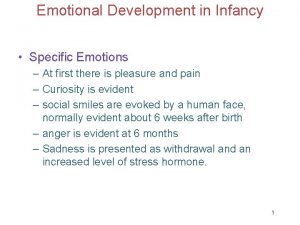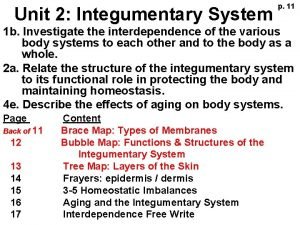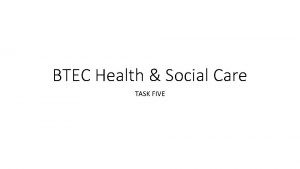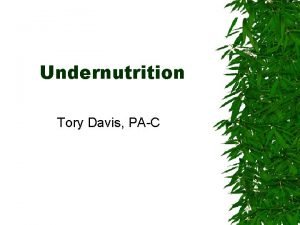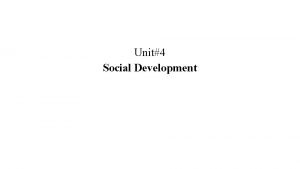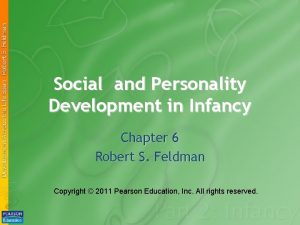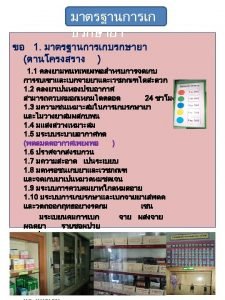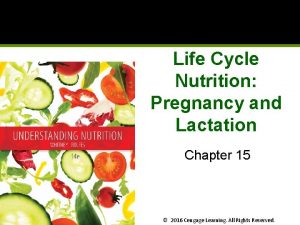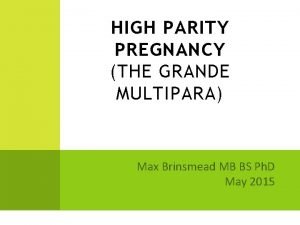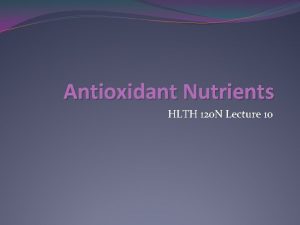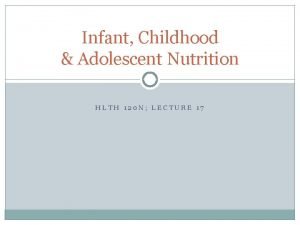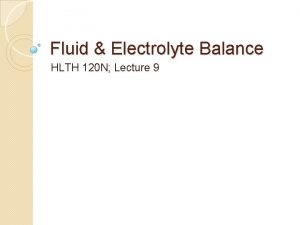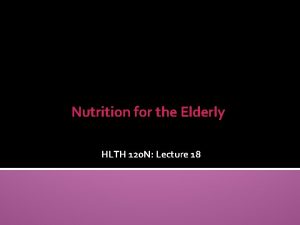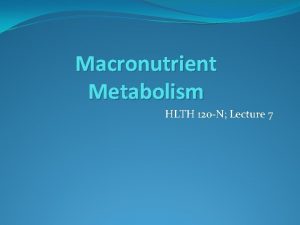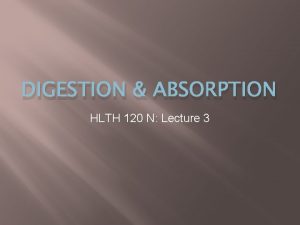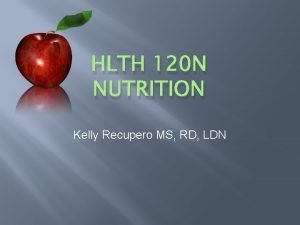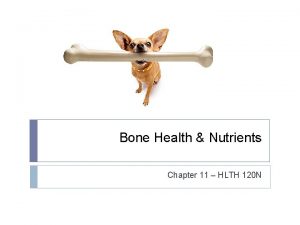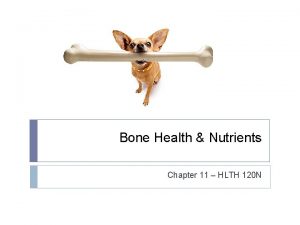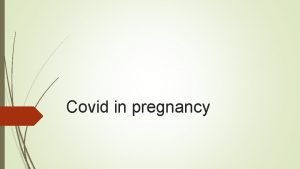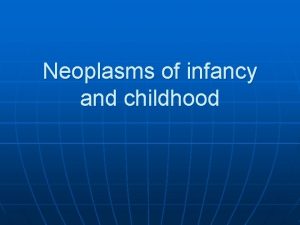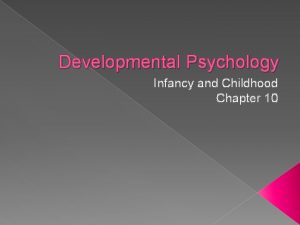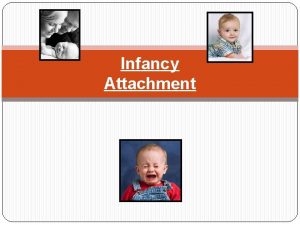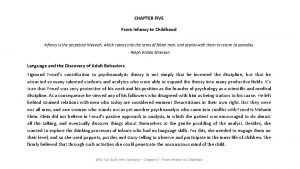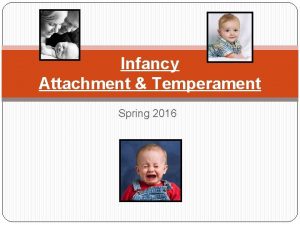Pregnancy Infancy HLTH 120 N Lecture 16 Identify






































- Slides: 38

Pregnancy & Infancy HLTH 120 N; Lecture 16

�Identify optimal weight gain ranges during pregnancy �Recognize factors that increase risk of complications during pregnancy and through the life of the infant �Understand lactation and nutrient needs associated with it �Identify advantages and disadvantages of breastfeeding & formula feeding Objectives

�Pre-Conception ◦ Avoid Nutrient Deficiency / Toxicity ◦ Avoid substances that cause defect ◦ Maintain a healthful body weight & diet � �Adequate nutrition is essential for tissue formation, neurological development, bone growth, and modeling Nutrition before & during pregnancy

�Must support mothers functions plus normal fetal growth & development �Full ◦ � 3 term / Gestation: weeks trimesters ◦ 13 -14 weeks each Nutrition During Pregnancy

�Begins when the egg is fertilized �At day 10 implants in uterine lining ◦ Cell growth, multiplication & differentiation ◦ Which nutrients? �Next 6 weeks structure of body forms �Placenta is formed by week 4 ◦ Becomes a fully functioning organ � 1 st Trimester

�Week 8 ◦ Organs & tissues dramatically differentiated ◦ � 3 rd Month ◦ Embryo is now a fetus ◦ Many nutrients needed for dramatic growth ◦ Irreversible damage can occur �Blood supply 1 st Trimester

Second �Fetus grows & matures �Some pre-mature can survive Third �Important organs mature �Gains nearly ½ length & ¾ weight! �Average 7. 5 lbs; 18 -22 inches 2 nd & 3 rd Trimesters

�Likely �Low with: birth weight: �Pre-term: �SGA: ◦ Not pre-term, just low weight �Risks: Low birth weight

�Large gains can be risky �Pattern of weight gain is important: ◦ First trimester: ◦ Second & third trimesters: per week �Overweight: 0. 6/wk Obese: 0. 5 lb/wk �Weight loss during pregnancy may deprive the fetus of critical nutrients Weight Gain during pregnancy

What about pregnant adolescents? With twins, gain should be 37 -54 lbs

What is all the weight?

�Requirements for nearly all nutrients increase during pregnancy �Select foods �My. Pyramid �Monitor Plan for Moms is a useful tool intake of: ◦ ◦ ◦ Nutrition During Pregnancy

�Energy Balance ◦ 2 nd and 3 rd trimester: + ◦ Safe, moderate physical activity kcal/day �Carbohydrates ◦ g/day minimum �Protein ◦ g/kg/day �Fats ◦ Help newborns regulate body temperature ◦ Omega-3 (DHA) ◦ Limit ; avoid fats Macronutrients

�Calcium �Folate �Iron �Vitamin B 12 �Zinc �Vitamin C �Sodium �Vitamin A �Iodine �Vitamin D Micronutrients – most critical

Folate B 12 � Required for cell � Regenerates active division & development folate of � RDA ↑ � Deficiency � � Absorption more �macrocytic anemia efficient (immature blood cells) � RDA increases � Who should supplement?


Vitamin C � Synthesis of _______ � Decreased concentration in maternal blood � Deficiency: preterm births, complications � RDA: 85 mg/day; ◦ more if _____ Vitamin A � 10% increased need � Deficiency ◦ ↑ risk of low birth weight, growth problems, preterm delivery � Excess?

� RDA = same as for non-pregnant women � RDA = 1, 300 mg/day for adolescents � Absorption is efficient � Pregnant lactoseintolerant women? Calcium � AI does not increase � Supplements recommended: ◦ Darkly pigmented skin ◦ Limited sun exposure/ not regular milk drinker � Excessive vitamin ◦ Developmental disabilities Vitamin D D

� Infant (3 rd need increases trimester) � Iron-deficiency anemia � Deficiency increases rate of low birth weight, preterm, stillbirth, and death � RDA = 27 mg per day � Sources? Iron � Need increases 38% � Critical for DNA, RNA, protein synthesis � Deficiency ◦ malformations, premature birth, decreased birth size � Absorption from supplements low � Sources? Zinc

�RDA not altered �Excess? �Maintain balance �Needs ↑ significantly �Sprinkling salt onto food unnecessary fluid ◦ ↑ body fluid a normal and necessary part of pregnancy Sodium �Balanced, healthful diet will provide all the iodine needed during pregnancy Iodine

�Are prenatal supplements required? �Meeting all nutrient needs requires careful and complex dietary planning �Good insurance for �“supplement” defined? Supplements During Pregnancy

�Fluid need increases to �Body temperature regulation �Amniotic liters per day fluid – function? �Combat fluid retention, constipation, and dehydration (morning sickness/vomiting) �Prevent UTI Fluids During Pregnancy

�Morning �Cravings sickness and aversions �Heartburn �Constipation �Gestational and hemorrhoids diabetes �Preeclampsia Nutrition-Related Concerns

�Nausea/vomiting pregnancy �Only associated with in the morning? �Symptoms can be reduced ◦ ◦ ◦ Well-tolerated: popsicles, jello, watermelon, and mild broths Morning Sickness

�Crave salty) a certain type of food (sweet, �Some evidence supports that cravings indicate a deficiency ◦ Pica: �Aversions are common Cravings and Aversions

�Hormones relax smooth muscles ◦ Slow colonic movement of food residue �Fiber needs: �Consume �Be - g/day adequate fluids physically active Constipation

�Insufficient insulin production or insulin resistance increases blood glucose levels �Requires strict diet, physical activity, and/or medication �Risks ◦ ◦ Gestational Diabetes

�Gestational hypertension: no symptoms �Pre-eclampsia: sudden increase in maternal blood pressure �↑ Risk with deficiency ◦ Vitamins C and E, calcium, magnesium �Treatment: �The bed rest, medical oversight only cure is childbirth Hypertensive Disorders

�Full physical stature not yet attained �Require more energy and bone-related nutrients ◦ Often inadequate weight gain �Higher rates of prenatal alcohol & drugs �Risks: Adolescent Pregnancy

�Caffeine is a stimulant ◦ Crosses the placenta � 1 or 2 cups of coffee (200 mg of caffeine) per day is not likely to harm the fetus �Higher amounts ◦ Increase risk of miscarriage, impair growth Consumption of Caffeine

�Alcohol crosses the placenta �Immature liver cannot metabolize alcohol �Condition: �Risks: ◦ spontaneous abortion, delivery complications, low birth weight, sudden infant death syndrome �Abstain: no known safe level Consumption of Alcohol

�Exposes infant to toxins ◦ lead, cadmium, cyanide, nicotine, carbon monoxide etc. �Fetal blood flow reduced �Risks: ◦ miscarriage, stillbirth, placental abnormalities, growth retardation, preterm, low birth weight ◦ Higher rates of sudden infant death syndrome, and. Smoking

�Avoid raw or undercooked. . ◦ Eggs, meat/fish/poultry, sprouts, and unpasteurized juices and milk �Avoid large fish ◦ Shark, swordfish, and king mackerel and limit canned albacore tuna ◦ Be mindful of marine toxins/preparation Food Safety

� �Helps to feel in control of changing body �Reduces �Lowers risk of blood pressure; ↓ �Lessens lower back pain �Shortens the duration of active labor Exercise

�Lactation: production of breast milk � : first milk produced ◦ Rich in proteins, antibodies, vitamins, minerals ◦ Good bacteria in the infant’s GI tract Hormones �Synthesize milk & stimulate “let down” Breastfeeding

�Milk production requires - cal/day �Consume 300− 400 kcal/day above pre-pregnancy needs �Gradual weight loss �Increased needs: protein, carbohydrates, DHA, vitamins, minerals (calcium), fluid Nutrient Needs w/ breastfeeding

�High-quality nutrition: protein, DHA �Absorbable iron, calcium, magnesium � prevent allergies & infections �Assists mother in �Suppresses �Convenient, ovulation cost-efficient Advantages of Breastfeeding

�Requires patience and practice �Harmful substances are passed into breast milk: drugs, caffeine, alcohol, pesticides, mercury �HIV is transmitted through breast milk �Social concerns Challenges to Breastfeeding
 Molar pregnancy symptoms
Molar pregnancy symptoms 100+80+40
100+80+40 120*120 px
120*120 px 01:640:244 lecture notes - lecture 15: plat, idah, farad
01:640:244 lecture notes - lecture 15: plat, idah, farad Principles of growth and development
Principles of growth and development Infancy period
Infancy period Socialization from infancy to old age
Socialization from infancy to old age Chapter 10 infancy and childhood
Chapter 10 infancy and childhood New emotions that appear toward the second year
New emotions that appear toward the second year Infancy and childhood psychology
Infancy and childhood psychology Messianic prophecies fulfilled in the infancy narratives
Messianic prophecies fulfilled in the infancy narratives Catastrophic epilepsy infancy
Catastrophic epilepsy infancy Infancy and childhood physical development
Infancy and childhood physical development Infancy childhood adolescence adulthood old age
Infancy childhood adolescence adulthood old age Socioemotional development in infancy
Socioemotional development in infancy Infancy physical changes
Infancy physical changes Module 47 infancy and childhood cognitive development
Module 47 infancy and childhood cognitive development Infancy
Infancy Infancy stage of development
Infancy stage of development Intellectual development health and social care
Intellectual development health and social care Infancy
Infancy Chapter 10 infancy and childhood
Chapter 10 infancy and childhood Pies in infancy
Pies in infancy Infancy psychosocial development
Infancy psychosocial development Chapter 10 infancy and childhood
Chapter 10 infancy and childhood 6 life stages
6 life stages Chapter 5 cognitive development in infancy and toddlerhood
Chapter 5 cognitive development in infancy and toddlerhood Social development in infancy and childhood
Social development in infancy and childhood Lesson quiz 3-2 infancy and childhood
Lesson quiz 3-2 infancy and childhood Personality development in infancy
Personality development in infancy Pavlik harness
Pavlik harness Ap psych schema
Ap psych schema Module 46 infancy and childhood physical development
Module 46 infancy and childhood physical development Infants display a wide range of emotional expressions
Infants display a wide range of emotional expressions Blood clotting positive feedback diagram
Blood clotting positive feedback diagram Pregnancy declaration
Pregnancy declaration Sulperazone obat apa
Sulperazone obat apa Components of weight gain during pregnancy
Components of weight gain during pregnancy What is high parity
What is high parity








